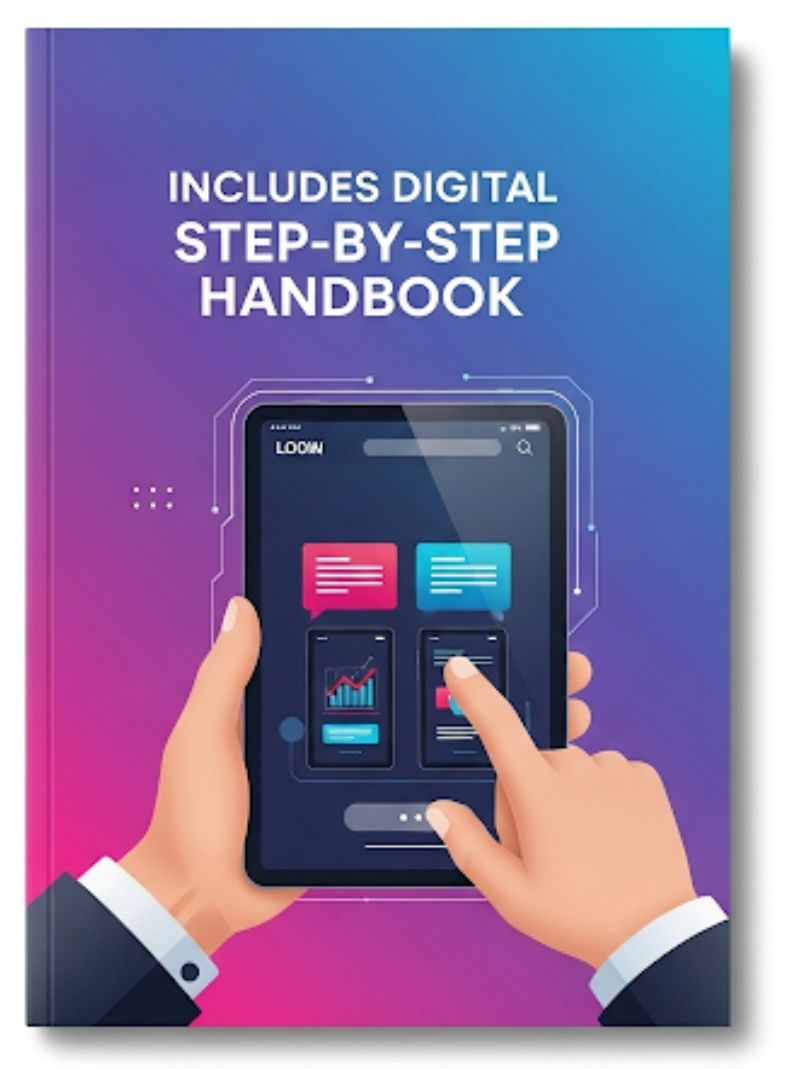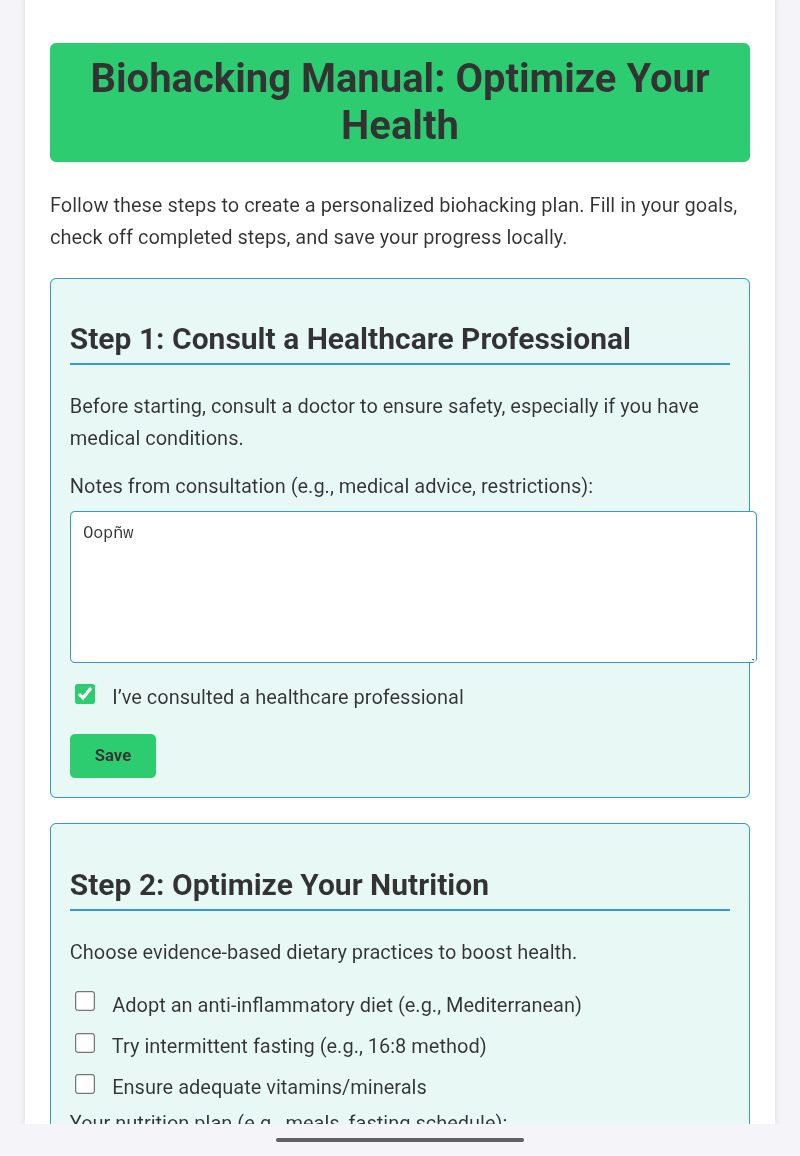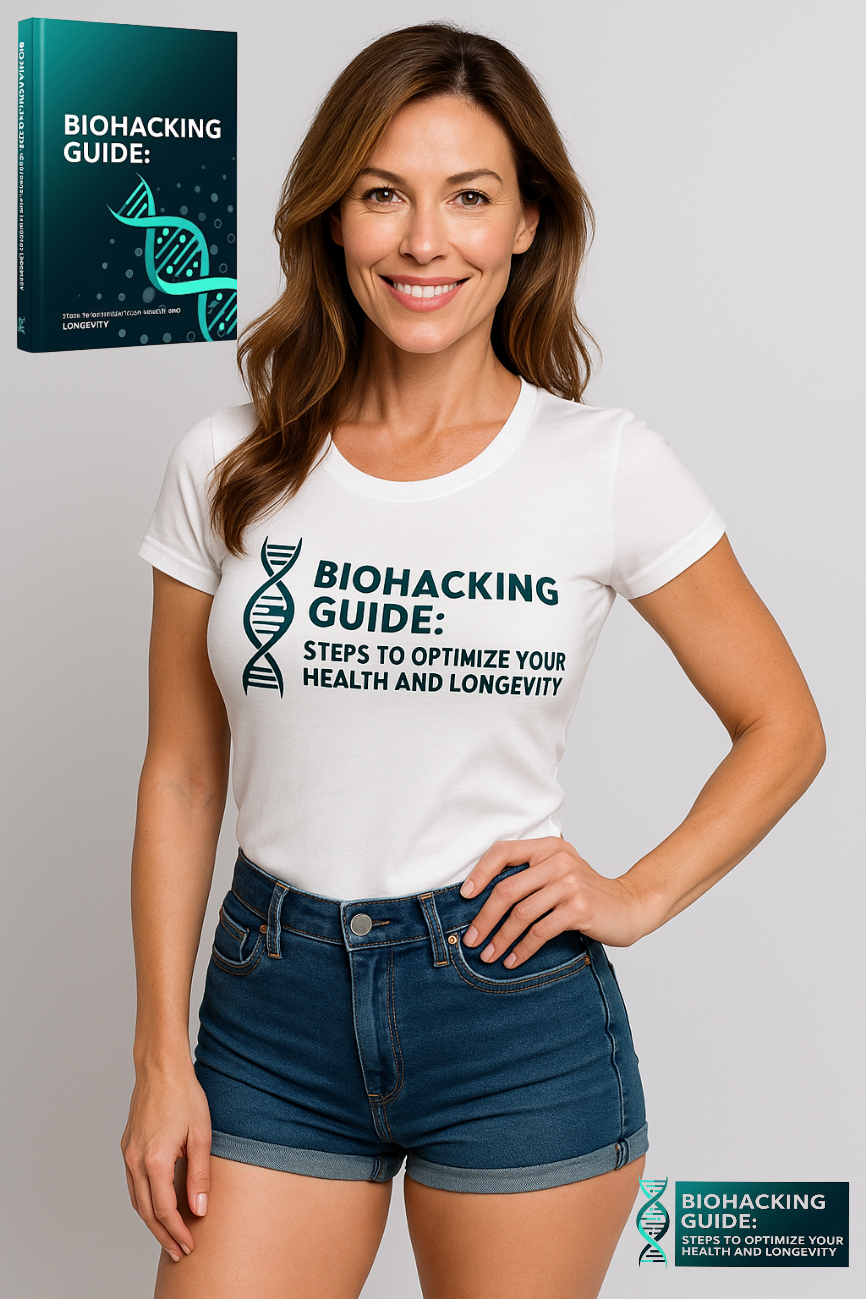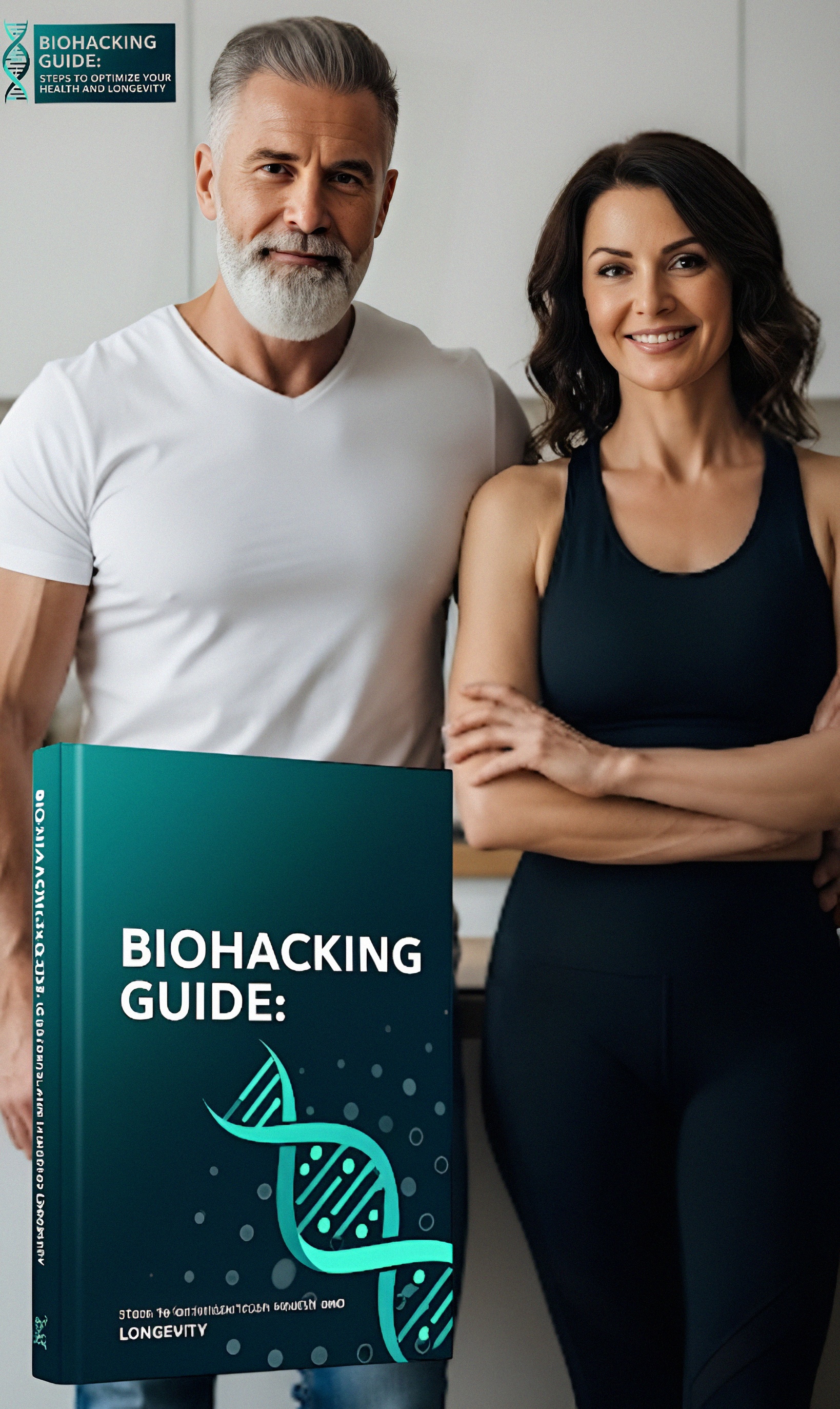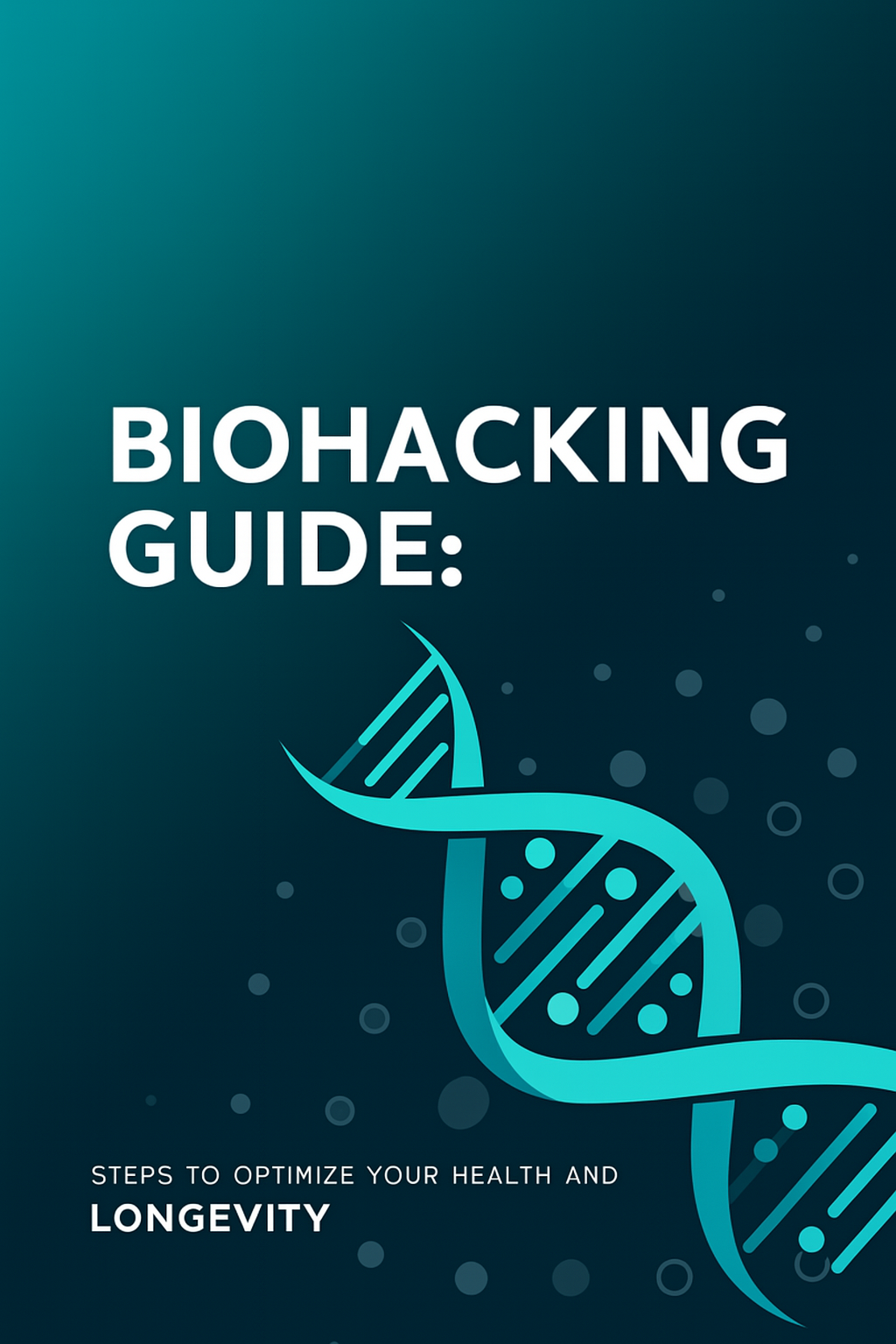
Biohacking Guide: Steps to Optimize Your Health and Longevity
This guide simplifies the science of biohacking—using evidence-based methods to improve your health, performance, and lifespan. It’s designed to be practical, safe, and easy to understand, based on proven practices and clear recommendations.
Free Digital Handbook
Your complete step-by-step guide (online version included with this book)
Use Online
What is Biohacking?
Biohacking is about taking control of your biology to feel better, live longer, and perform at your best. It includes lifestyle changes, diet adjustments, exercise routines, and sometimes technology to optimize your body and mind. Think of it as a mix of science, self-experimentation, and smart habits.
There are two main types:
- Holistic Biohacking: Focuses on natural approaches like diet, exercise, and sleep.
- Technological Biohacking: Uses tools like wearable devices or genetic testing to track and improve health.
Why Biohacking Matters
Biohacking is popular because it empowers you to improve your health using science. However, not all claims are backed by evidence. This guide focuses on what works, what is safe, and how to avoid risky or unproven trends.
Key Biohacking Practices (Backed by Science)
Here are the most effective and research-backed ways to biohack your body:
1. Nutrition
- Anti-Inflammatory Diets: Eat foods like fruits, vegetables, nuts, olive oil, and fish (e.g., Mediterranean diet) to reduce inflammation and support long-term health.
- Intermittent Fasting: Skip meals for set periods (e.g., 16 hours fasting, 8 hours eating) to improve metabolism, aid weight loss, and boost cellular repair.
- Micronutrients: Ensure you get enough vitamins and minerals (like vitamin D, magnesium, or omega-3s) through food or supplements.
- Supplements: Some, like Coenzyme Q10 or NMN, show promise for energy and longevity, but always consult a doctor before starting.
- Personalized Nutrition: Emerging science (nutrigenomics) suggests tailoring your diet to your genetics for better results. Genetic tests can help here.
2. Exercise
- High-Intensity Interval Training (HIIT): Short bursts of intense exercise (e.g., sprinting for 30 seconds, resting, repeating) improve heart health, fitness, and anti-aging markers.
- Strength Training: Lift weights or do bodyweight exercises to build muscle, strengthen bones, and reduce mortality risk.
- Cardio: Activities like running or cycling keep your heart healthy and are linked to a longer life.
- Recovery: Prioritize sleep, proper nutrition, and techniques like cold showers or stretching for faster recovery.
3. Sleep
- Maintain a regular sleep schedule.
- Create a relaxing bedtime routine (e.g., no screens, dim lights).
- Optimize your bedroom (cool, dark, quiet) for better rest.
4. Stress Management
- Practice mindfulness, meditation, or yoga to reduce chronic stress.
- Spend time in nature to improve mood and lower stress hormones.
5. Technology
- Use wearable devices (e.g., fitness trackers, smartwatches) to monitor steps, heart rate, or sleep.
- Try apps for meditation or tracking diet and exercise.
- Be cautious: Not all devices are accurate, so verify claims and data.
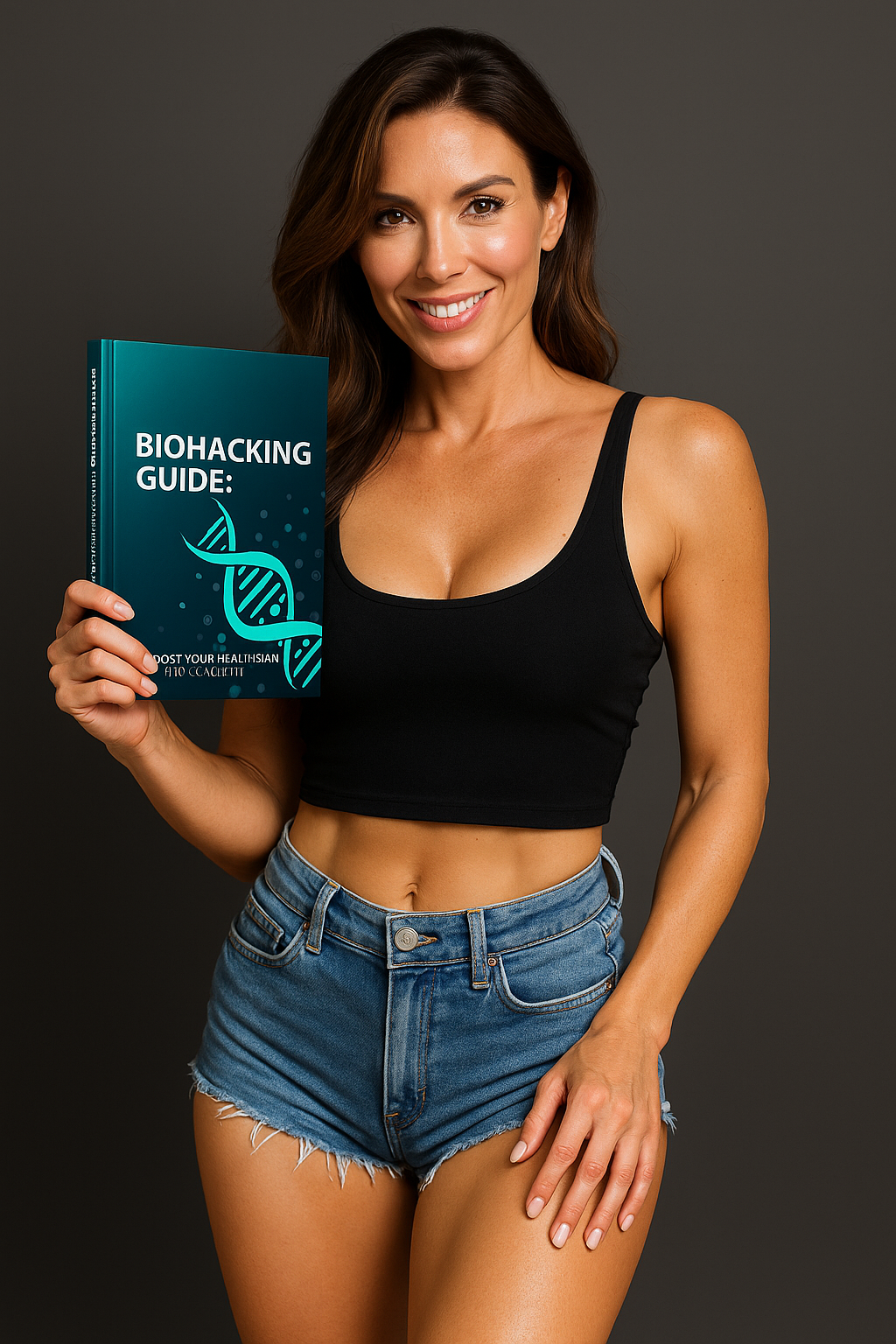
How to Start Biohacking Safely
- Talk to a Doctor: Before trying new diets, supplements, or intense exercise, consult a healthcare professional, especially if you have medical conditions.
- Start Small: Begin with low-risk changes like eating more vegetables, trying a 12-hour fast, or adding a short daily walk.
- Track Your Progress: Use a journal or wearable device to monitor how changes affect your energy, mood, or health.
- Personalize: Every body is different. Use tools like genetic tests or blood work (e.g., inflammation or blood sugar checks) to tailor your approach.
- Stay Skeptical: Avoid unproven products or extreme practices (e.g., DIY gene editing) that lack scientific backing.
Things to Watch Out For
- Unproven Claims: Many biohacking products (like certain supplements or gadgets) lack solid research. Always verify claims.
- Safety Risks: Extreme practices, like genetic biohacking, can be dangerous and are often unregulated.
- Overdoing It: Trying too many changes at once can overwhelm you or harm your body. Go slowly and listen to your body.
- Special Considerations: Pregnant women, children, or people with chronic illnesses should be extra cautious and work with a doctor.
Tools and Technology to Explore
- Wearables: Devices like Fitbit or Apple Watch track activity, sleep, and heart rate.
- Sleep Trackers: Tools like Oura Ring monitor sleep quality.
- Genetic Testing: Kits like 23andMe can reveal how your genes affect diet or exercise needs.
- Continuous Glucose Monitors: These track blood sugar to optimize diet (consult a doctor first).
- Tip: Always research a device’s accuracy before relying on it.
Why Personalization is Key
Your body is unique, so what works for someone else might not work for you. Emerging fields like nutrigenomics (gene-based diet) and exercise genomics (gene-based exercise) can help you personalize your biohacking plan. For example:
- A genetic test might show you process carbs poorly, so you’d focus on low-carb meals.
- Blood tests can reveal deficiencies (e.g., low vitamin D) to guide supplementation.
Real-World Examples
- Case Study: Someone used intermittent fasting (16:8 method) and HIIT workouts, losing 15 pounds and improving energy in 3 months.
- Success Tip: Consistency and small, sustainable changes lead to big results.
- Common Mistake: Jumping into extreme diets or overtraining without proper research can cause burnout or injury.
Ethical and Safety Notes
- Genetic Biohacking: Modifying your genes (e.g., CRISPR) is risky, unregulated, and not recommended without expert supervision.
- Regulation: Many biohacking products are not FDA-approved, so be cautious.
- Medical Supervision: Work with a doctor for anything involving medications, devices, or major lifestyle changes.
Key Summary
- Follow Proven Methods: Focus on science-backed diet, exercise, sleep, and stress management.
- Personalize Your Plan: Use data (like blood tests or genetic information) to tailor your approach.
- Be Cautious: Avoid unproven or risky practices, and always consult a professional.
- Track and Adjust: Monitor your progress and adjust habits based on what works for you.
What’s Next for Biohacking?
Future research will likely improve personalized approaches and validate more interventions. For now, focus on evidence-based practices, stay curious, and keep learning about your body.
Ready to start? Choose a small change (like 10 minutes of daily exercise or eating more vegetables), track how you feel for a month, and build from there. For more information on xAI tools or services, visit x.ai.
